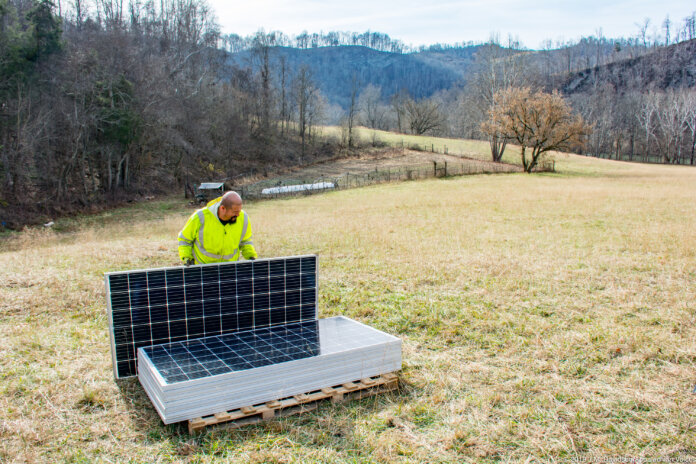The coal mining industry has been declining for decades in the far southwestern corner of Virginia, a trend made even worse of late due to the pandemic. The region has experienced a significant economic downturn as a result, with unemployment and poverty levels rising as no new opportunities have successfully replaced the jobs lost to coal’s decline.
Now, with legislation enacted by the 2020 Virginia legislature, at least one new economic opportunity shines as a bright spot: solar energy.
On April 11, Gov. Ralph Northam signed two significant bills into law: the Solar Freedom Act (HB 572 and SB 710), sponsored by Delegate Mark Keam and Sen. Jennifer McClellan, and the Virginia Clean Economy Act (HB 1526 and SB 851), sponsored by Delegate Richard C. “Rip” Sullivan Jr. and McClellan.
These two laws greatly expand the power purchase agreement (PPA) programs and net metering for customers of investor-owned utilities Appalachian Power and Old Dominion Power, which serve different areas of western Virginia, including the coalfields. For both, the net metering cap now jumps from 1% to 6%, increasing capacity to approximately 14.4 MW.

The Solar Freedom Act provides another opportunity for developers: Old Dominion Power must offer a community solar program to its multifamily residential customers.
Most notably, for the first time ever, customers of Old Dominion territory can take advantage of PPAs, a provision that the Solar Workgroup of Southwest Virginia has advocated since the group’s inception in 2016. In Appalachian Power territory, PPAs were previously limited to nonprofit higher education entities and capped at 7 MW but are now available to non-residential and low-income customers. Both utilities’ PPA programs are limited to 40 MW.
Incentivizing renewable energy
Also for the first time in the commonwealth, the Virginia Clean Economy Act (VCEA) sets up a renewable portfolio standard. It requires Appalachian Power and Dominion Energy to provide 100% of their electricity from renewables by 2050 and 2045, respectively.
Alhough the RPS doesn’t apply to Old Dominion or to electric cooperatives, and so doesn’t reach the furthest tip of the state, Appalachian Power and Dominion may well seek to meet part of their requirements from renewable projects developed in the coalfield region. Both utilities can procure their renewable energy from outside of their service territory, as long as it’s in Virginia. The utilities will seek bids annually for solar and wind generation, opening the door for developers to pitch projects in southwest Virginia.
New life for old coal sites
Under a key section of VCEA, Dominion specifically must develop 16.1 GW of solar and wind energy by 2035, and 200 MW of that must be placed on “previously developed project sites,” including former mine sites, former retail, commercial or industrial sites, parking lots, landfills or other brownfields.
Solar developers and advocates for coal mine land reclamation have been pursuing the possibility of solar energy development on coal-impacted land for years. One such project is slated for construction this year in the town of Wise in southwest Virginia, providing power to a nearby data center as well as cleaning up an old coal mine site.
The Virginia Department of Mines, Minerals and Energy recently published a story map detailing the great potential for solar development on previously mined land in the Virginia coalfields. With strong interest in developing abandoned coal mine sites for solar energy in recent years, Dominion’s mandate under the VCEA provides a welcome level of market certainty for developers. And the DMME’s thorough analysis gives southwest Virginia a head start in helping Dominion to meet the 200 MW requirement.
A region primed and ready for solar
The new laws set up enormous opportunity for solar developers in Virginia’s coalfields. To boost the potential even more, eight local governments in the region achieved SolSmart designation in 2019, setting themselves up to more readily facilitate solar development.
Over the past four years, the Solar Workgroup of Southwest Virginia has readied the region for solar energy development through education, collaboration and advocacy, but its efforts were stymied by policy inequities and regulatory barriers. Now, the new laws mean solar developers can walk through the region’s door of opportunity and deliver the solar services so many people are seeking.
Chelsea Barnes is New Economy Program Manager for Appalachian Voices, a regional environmental advocacy nonprofit.
Photo by Jimmy Davidson; courtesy Appalachian Voices




